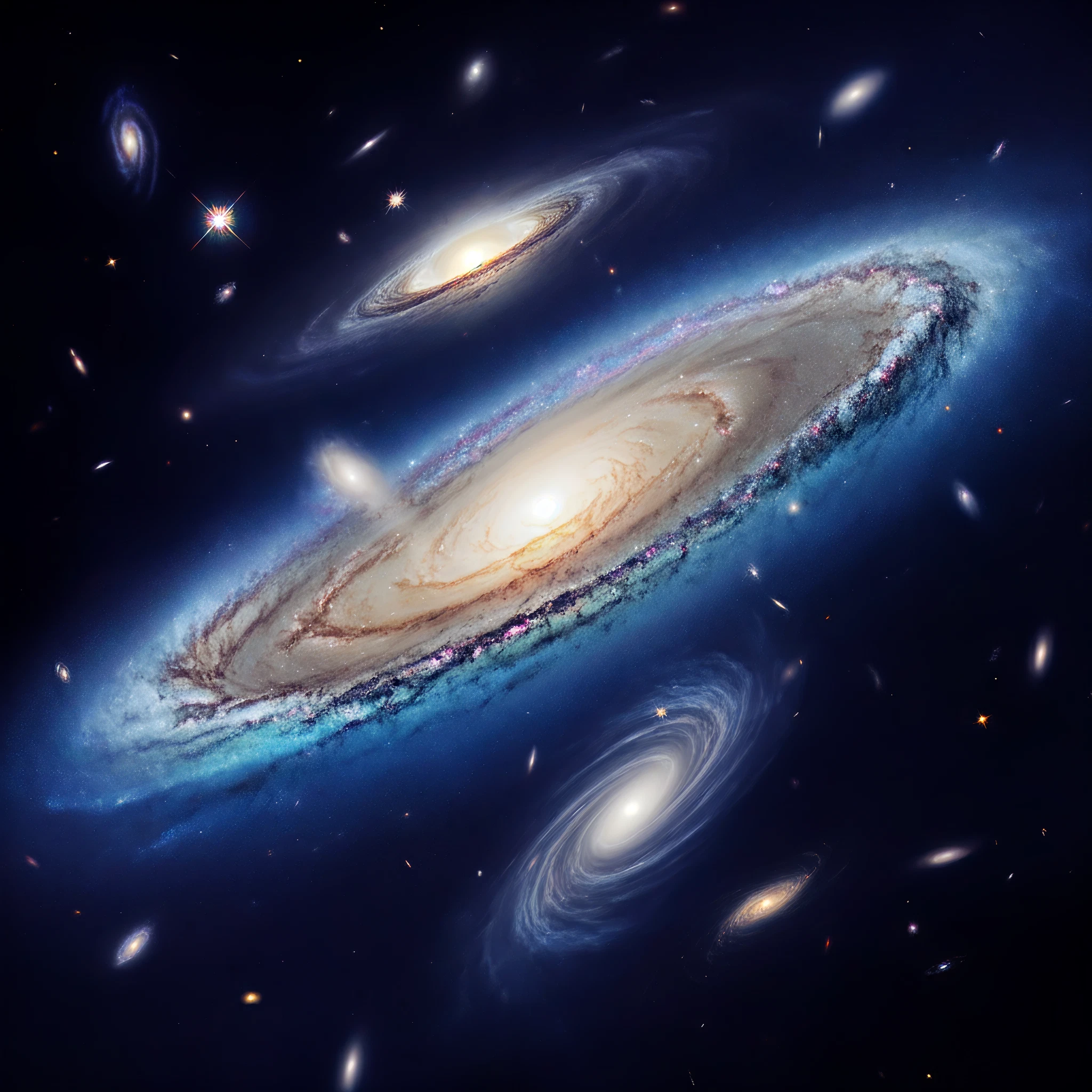The Milky Way and Andromeda galaxies are part of the Local Group, a cluster of more than 54 galaxies bound together by gravity. Andromeda, which sits roughly 2.5 million light-years away from us, is hurtling toward the Milky Way at a speed of about 110 kilometers per second. While this sounds fast, the collision will still take billions of years to happen (if it happens at all, as new findings suggest). Simulations predict that this celestial tango could occur approximately 4-5 billion years from now.
While the event might sound catastrophic to us Earthlings, it’s more of a graceful, slow-motion dance from a galactic perspective.
What Will Happen When They Collide?
When the Milky Way and Andromeda collide, the encounter will dramatically reshape both galaxies. Here’s what scientists predict:
- Night Sky Wonder: The initial stages of interaction will be visible from Earth (if humanity is still around). Andromeda will appear as a larger and brighter object in the night sky before merging with the Milky Way.
- A New Galaxy: The two galaxies will combine to form a single, massive elliptical galaxy. Scientists mockingly call it “Milkomeda.”
- Effect on the Solar System: Surprisingly, the collision poses a minimal threat to our solar system. While the structure of both galaxies will intertwine, the vast distances between stars mean physical collisions between them are rare. However, our solar system may be pushed into a different orbit around the newly-formed galaxy.
- Cosmic Artistry: From stars being flung across the night sky to the eventual formation of new star systems, the effects of this union will paint a stunning picture of galactic rebirth.
Will It Definitely Happen?
For years, textbooks told us that the collision was inevitable. However, emerging research provides a more nuanced view. A groundbreaking study combining data from the Hubble Space Telescope with the European Space Agency’s Gaia telescope, supported by 100,000 simulations, suggests that there’s only about a 50/50 chance of the two galaxies colliding in the next 10 billion years. Factors such as the gravitational pull of smaller galaxies in the Local Group, such as the Large Magellanic Cloud, can influence the outcome.
This uncertainty only underscores how dynamic and complicated the cosmic ballet really is.
Why Does This Matter?
The collision of the Milky Way and Andromeda is a cosmic event with profound implications for our understanding of the universe. Studying this interaction allows scientists to:
- Understand Galactic Evolution: Galactic collisions are common in the universe. Exploring this event gives scientists insight into how galaxies evolve and transform over time.
- Refine Gravitational Models: Observing and simulating galactic collisions aids astronomers in developing more accurate models of gravity on a large scale.
- Grasp Our Cosmic Context: Learning about these phenomena is a humbling reminder of our tiny place in the vast universe.
- Advance Astronomical Technology: Programs like Hubble and Gaia drive innovation in ground-based and space-based research methods.
What the Future Holds
The fate of the Milky Way and Andromeda is still unfolding. New research and technology will continue to refine our understanding of if and when this collision will happen. One thing is certain, though. Whether it’s a collision or a near-miss, this interstellar event reminds us how interconnected and dynamic the cosmos truly is.
Until then, we can only watch, wait, and continue to imagine the celestial artwork that is our universe.
Call to Action
Want to indulge your astronomical curiosity even further? Watch the latest simulations of the Milky Way-Andromeda collision on NASA’s official YouTube channel here. Subscribe to our newsletter to uncover more cosmic mysteries and share this article with fellow space enthusiasts!








